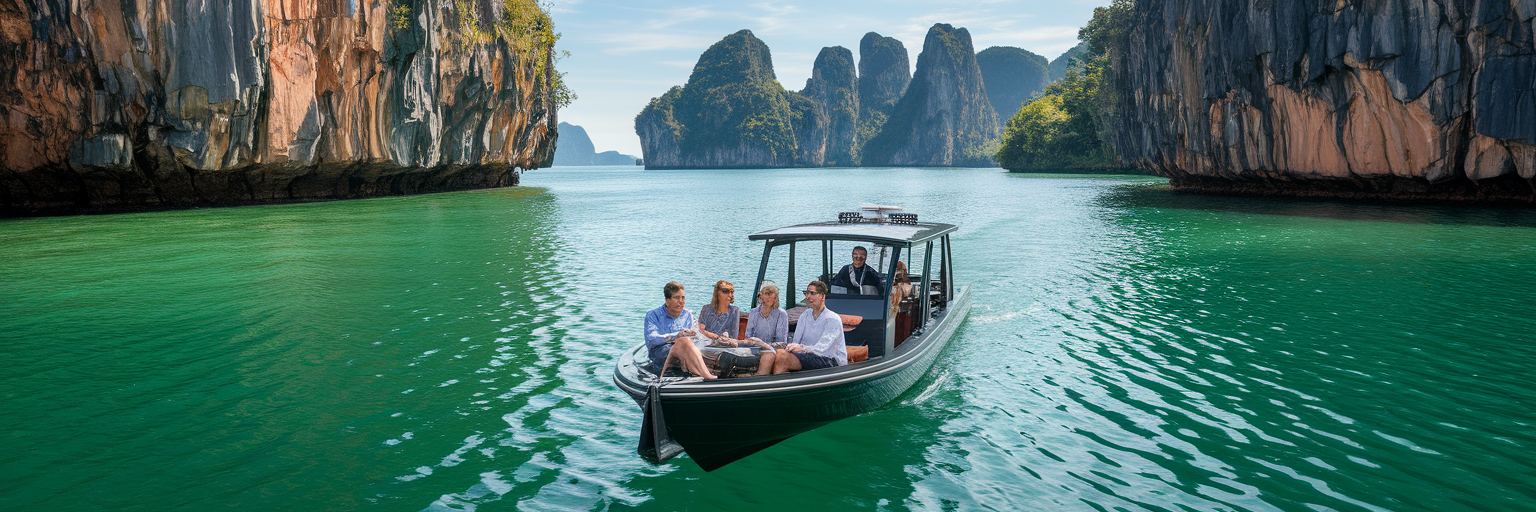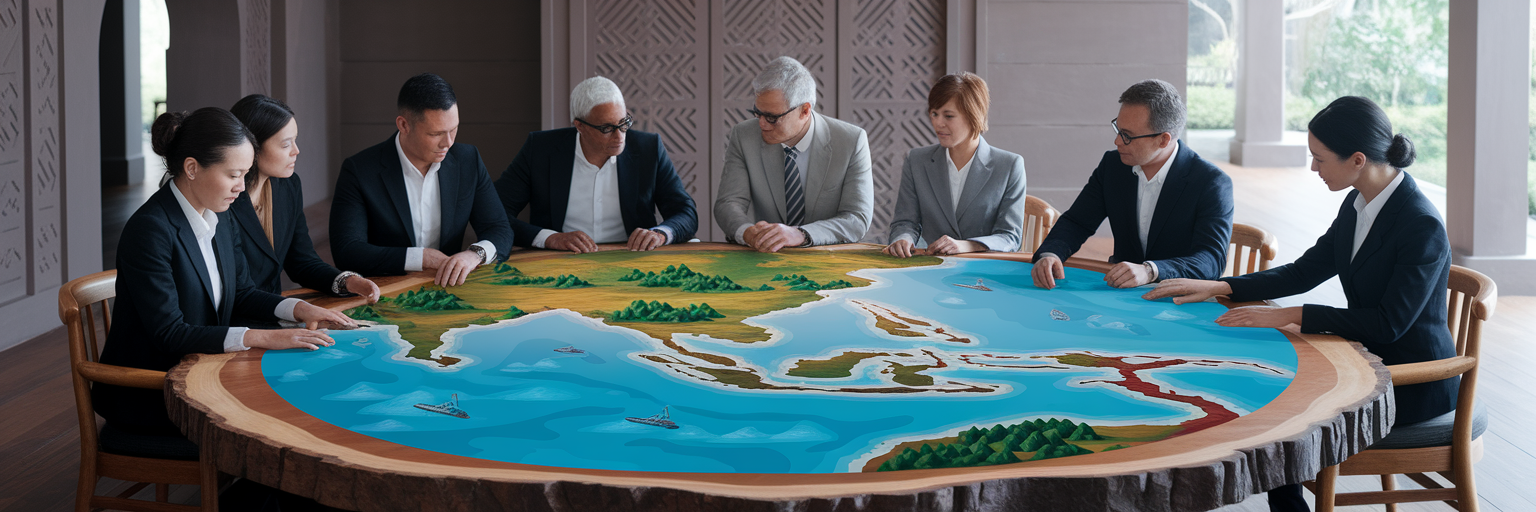The Future of Incentive Travel in Asia
Learn to design corporate incentive travel in Asia that moves beyond simple rewards to create meaningful, sustainable, and impactful experiences.

Learn to design corporate incentive travel in Asia that moves beyond simple rewards to create meaningful, sustainable, and impactful experiences.

The very definition of a corporate reward has changed. Where once it was measured in opulence alone, the benchmark for incentive travel in 2025 is about creating a legacy. It’s a direct reflection of a company's values and its commitment to environmental, social, and governance principles. This shift finds its perfect stage in Asia, where rich cultural heritage meets a growing infrastructure for sustainable tourism, particularly in destinations like Thailand.
The conversation around incentive travel is no longer just about rewarding performance. It’s about attracting and retaining the right people. Top-tier talent, especially from younger generations, actively seeks employers whose purpose aligns with their own. They scrutinise a company's actions, not just its statements. In this context, a thoughtfully designed, eco-conscious trip becomes a powerful expression of corporate culture.
Instead of a generic luxury holiday, imagine corporate incentive trip ideas that involve collaborating with marine biologists in the Andaman Sea or learning from social entrepreneurs in Bangkok. These are not just trips; they are tangible demonstrations of a company’s character. They show a commitment to a world beyond the boardroom, a value that resonates deeply with today’s most sought-after professionals. This is how you build loyalty that lasts long after the tan has faded. It’s about aligning corporate purpose with human experience, a philosophy we embed into every journey we create.
To move from intention to impact, 'sustainability' needs a clear and practical framework. It’s not a vague ideal but a foundational blueprint for every decision. This structure rests on three interconnected pillars: environmental stewardship, social responsibility, and economic vitality. This ESG-led approach is not an optional extra; it is the very architecture of modern incentive travel. The demand for this is clear. According to a report from Research and Markets, the Asia-Pacific event market is projected to grow significantly, driven by a rising demand for green initiatives.
This growth signals a strategic shift. Companies that integrate these pillars are not just doing good; they are positioning themselves for future success. Adopting a strategy of ethical event planning APAC means every choice, from the venue to the vendor, is made with purpose. It’s a holistic view that ensures a trip leaves a positive footprint. At Chab Events, our programmes are built on this very foundation, turning corporate trips into catalysts for positive change.
| Pillar | Core Principle | Practical Examples in Asia |
|---|---|---|
| Environmental Stewardship | Minimising ecological footprint. | Utilising EV transport in Bangkok, choosing resorts with water recycling systems, eliminating single-use plastics. |
| Social Responsibility | Creating positive community impact. | Partnering with local conservation projects in Chiang Mai, ensuring fair wages for local guides and performers. |
| Economic Vitality | Supporting the local economy ethically. | Sourcing delegate gifts from local artisan co-ops, contracting catering from farm-to-table businesses. |

The architecture of a sustainable trip is designed long before anyone boards a plane. It begins with deliberate choices that prioritise depth over distance and impact over intensity. This is where the real work of creating meaningful eco-friendly corporate events Thailand and beyond truly happens.
The first decision is where to go. This involves looking beyond glossy brochures to find destinations and venues with proven green credentials. We seek out partners with certifications for water conservation, renewable energy use, and waste management. In Thailand, for example, this means selecting resorts that are not just beautiful but are actively contributing to the preservation of their natural surroundings. Our deep local knowledge allows us to identify these hidden gems, ensuring the setting itself is part of the sustainable story we help our clients tell from our base in Bangkok.
How you get there and move around matters. We prioritise logistics that minimise the carbon footprint. This includes booking direct flights to reduce emissions, chartering electric vehicle fleets for ground transport in cities, and designing itineraries that cluster activities geographically. Every kilometre saved is a win for the planet and creates a more seamless, relaxed experience for guests.
Perhaps the most counterintuitive shift is moving away from the packed, multi-city tour. We advocate for 'slow travel'. Instead of a rushed week hopping between three cities, we design an immersive stay in a single, remarkable location. This approach dramatically reduces the trip's carbon footprint. More importantly, it allows for genuine connection. It gives teams the time to absorb the local culture, build stronger relationships with each other, and engage in activities that are truly restorative, not just another item on a checklist.
True sustainability is about building respectful, two-way relationships with local communities. It’s the difference between observing a culture from a tour bus and becoming a welcome part of it for a short time. The goal is to create authentic partnerships that are mutually beneficial, moving far beyond transactional tourism. This ethical approach is what transforms a great trip into an unforgettable one, defining the essence of luxury sustainable travel Asia.
This requires a commitment to integrating the social and economic pillars of sustainability into every detail. Here’s how it looks in practice:
This approach does more than just support the community. It profoundly enhances the guest experience. These are the moments of genuine connection that people remember and talk about, strengthening team bonds through shared, meaningful experiences.

While pre-trip planning lays the foundation, on-site execution is where a commitment to sustainability becomes visible and tangible. The goal is to eliminate waste at the source, creating a seamless and sophisticated experience that is as clean as it is memorable. This is a critical component for successful MICE events Asia sustainability initiatives, proving that luxury and responsibility can coexist beautifully.
Here are some of the key on-the-ground tactics we implement:
We also believe in bringing participants into the mission. By clearly communicating the event's green goals and showcasing the collective positive impact, we turn guests into active partners. They see firsthand that their participation contributes to a larger purpose, adding another layer of meaning to their experience.
The success of a modern incentive trip cannot be measured by its budget alone. The real return on investment is found in its lasting impact on your people, your brand, and the planet. To understand this, we must shift our perspective from cost to value, defining success with a holistic set of metrics that capture the full story of a sustainable incentive travel Asia programme.
A comprehensive measurement approach includes specific Key Performance Indicators (KPIs) across our three pillars:
This data is compiled into a compelling post-event impact report. This report is more than a summary; it is a powerful asset. It provides verifiable data for official ESG reporting, creates authentic content for internal communications and marketing, and builds a powerful business case for future investment. Ultimately, this approach proves that this form of travel is a strategic investment in a company's two most critical assets: its people and its reputation. Explore how we bring these impactful experiences to life.